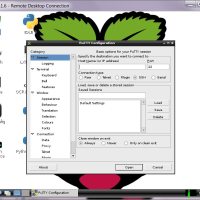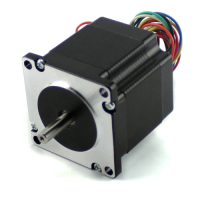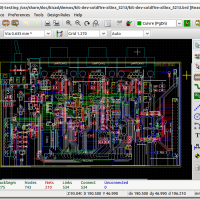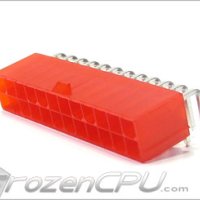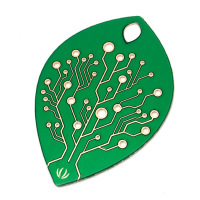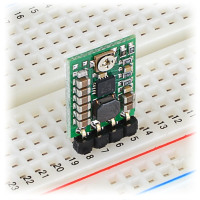Putty is a very useful application that can be used to connect to serial ports and Secure Shell(SSH) to Raspberry Pi’s. Putty is mostly used on Windows to connect to remote devices but it can also run on a Raspberry Pi. Steps to installing Putty on a Raspberry Pi: Open a terminal/shell window on your … Read More →
Category Archives: Electronics
Running the Arduino IDE on a Raspberry Pi
Arduino Boards and Raspberry Pi’s are a match made in heaven. The Arduino adds a bunch of sensory devices/libraries/well supported community and the Raspberry Pi add’s high end power processing to process/transform and distribute the data. Combined the possibilities are endless… So lets start at the beginning. In this session I will cover the basics of installing the Arduino IDE on the Raspberry Pi … Read More →
KiCad – Creating Gerber Files
To get your PCB designs manufactured you need to send the pcb manufacturer a bunch of files. These files are called Gerber Files. To generate them is easy. When you are done with your design open up your PCB in PCBNew. From the file menu click on “PLOT”. The Plot window is where you will generate the Gerber files … Read More →
KiCad (Free/Opensource Circuit-board design software) – Designing your first Circuit-Board (PCB)
KiCad is an alternative to Eagle PCB design software. We use it to design our PCB prototypes as it’s easy to work with, flexible and it’s free with no limitations. Below are two video’s to get you started with your first KiCad PCB designs. Recommended books: PCB Designers’ Reference – By Chris Robertson High Speed Digital Design – … Read More →
Arduino Fuse settings
I recently worked on converting GRBL to work on the Arduino Mega. There were some issues with the Fuse configuration. Luckily Cody Snyder has done a great job of mapping out all the Arduino Micro-controller Fuse values…. Arduino Uno Low Fuse 0xFF High Fuse 0xDE Extended Fuse 0×05 Arduino Duemilanove or Nano w/ ATmega328 Low Fuse 0xFF High … Read More →
Cheap,quick and simple Step-Up / Step-Down Regulator
Pololu.com just introduced a tiny new Step-Up / Step-Down voltage regulator. Features Output voltage 2.5 – 8 V Input voltage 2.7 – 11.8 V Output current 500 mA to 1000mA 3 x 11 × 17 mm This will work very well in low-powered devices where you want to every bit of power a battery can offer. It is also … Read More →
Stepper Motors – Wiring up a Bipolar Stepper Motor
Bipolar stepper motors usually have 4 wires. That’s two wires per coil, hence the name Bi-Polar. Below are schematics of setups used with stepper motors. Steppers motor wires are usually labeled as A, B, C, D. A and C are connected, as well as B and D. You can generally determine which wires are connected using a multimeter,measuring … Read More →
